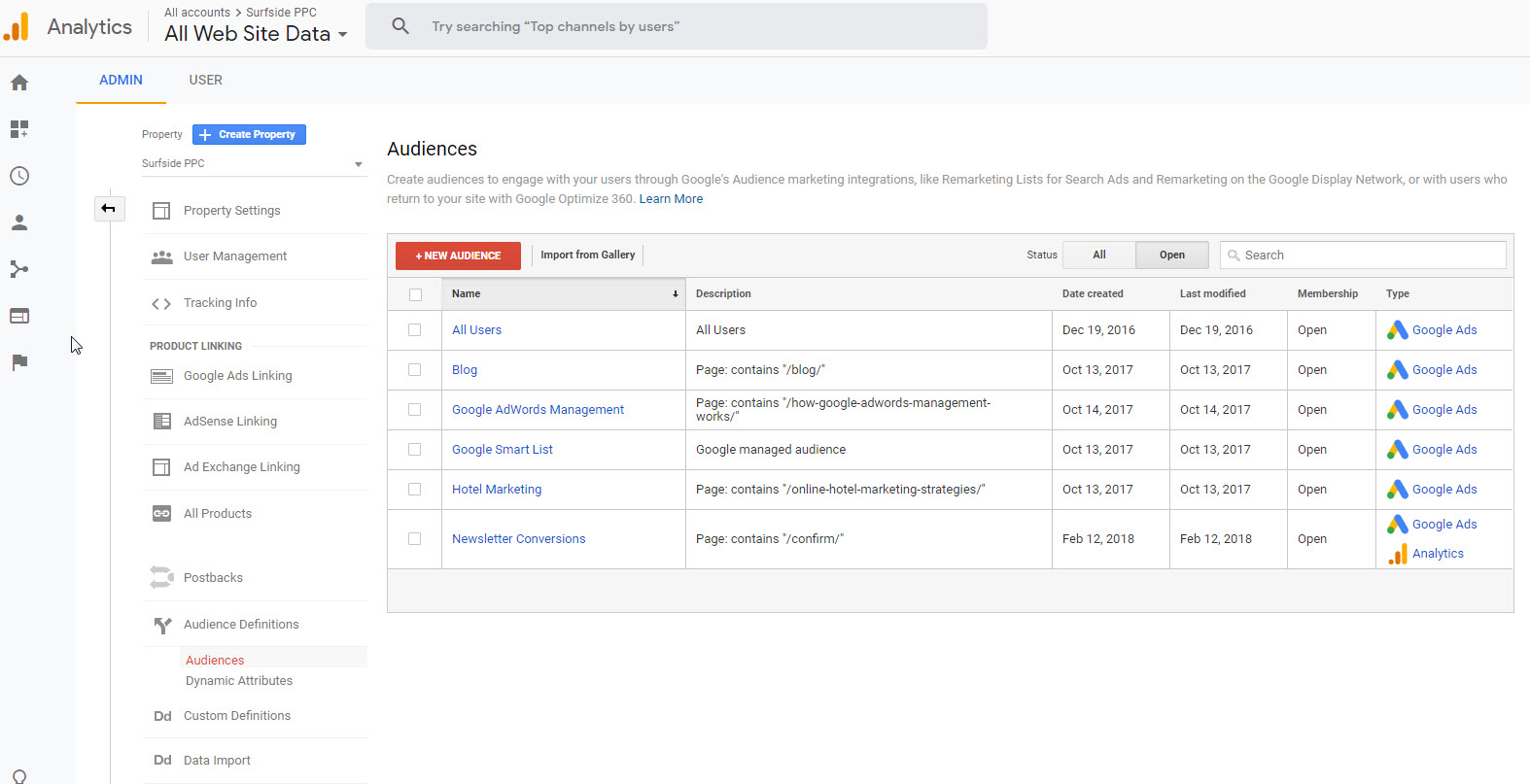Key Functions of Remarketing In Google Analytics Explained
Key Functions of Remarketing In Google Analytics Explained
Blog Article
Reliable Strategies for Remarketing in Google Analytics
In the realm of digital advertising and marketing, the world of remarketing in Google Analytics stands as a pivotal device for organizations intending to enhance their on-line existence and conversion rates. Through critical target market segmentation, tailored remarketing lists, and appealing advertisement creatives, companies can craft customized campaigns that reverberate with their target audience. Nonetheless, real success hinges on the ability to continuously refine and maximize these techniques based on efficiency metrics and data insights. By checking out the nuances of vibrant remarketing and leveraging advanced monitoring tools, businesses can open the full potential of their remarketing initiatives, causing increased brand name visibility and customer interaction.
Target Market Division
Making use of target market division is a pivotal technique in optimizing the effectiveness of remarketing campaigns within Google Analytics. By separating your target market into unique teams based upon their habits, demographics, or passions, you can customize your advertising messages to be much more appropriate and interesting. This approach allows you to provide customized advertisements to certain segments, boosting the chance of conversion.

Moreover, audience division assists you understand the varying needs and preferences of different client groups, allowing you to craft even more engaging advertisement creatives and deals. This targeted method not only enhances the performance of your remarketing efforts but also enhances general campaign performance.
Establishing Remarketing Listings
To successfully carry out remarketing methods in Google Analytics, the preliminary step includes producing targeted remarketing listings based on details audience interactions. Establishing up remarketing listings allows online marketers to segment their internet site site visitors into various groups based upon their actions, such as web pages watched, items looked for, or activities taken on the website. By specifying these segments, marketers can after that create customized and pertinent advertisements that target these specific teams, enhancing the likelihood of conversion.
Remarketing checklists can be established up utilizing various requirements such as web page gos to, duration of browse through, particular objective completions, or perhaps particular occasions set off on the internet site. This level of customization makes it possible for online marketers to tailor their ads to match the passions and preferences of each segmented target market, bring about higher involvement and conversion rates.
Furthermore, remarketing checklists can additionally be produced based on information imported from various other resources like CRM systems, enabling a lot more specific targeting. By setting up these targeted remarketing checklists, online marketers can properly reach out to potential clients that have already shown passion in their services or items, making the most of the influence of their remarketing projects.
Developing Engaging Ad Creatives
After segmenting site site visitors right into targeted remarketing checklists based on details target market communications, the following crucial action is to craft compelling advertisement creatives that resonate with each segmented team's preferences and rate of interests. The effectiveness of remarketing campaigns heavily counts on the capability of these advertisement creatives to record the focus of the target market and drive them to take the preferred action.
To produce engaging ad creatives, it is necessary to recognize the one-of-a-kind attributes of each segmented group (What Is “Remarketing” In Google Analytics?). Tailoring the messaging, visuals, and uses to line up with the rate of interests and choices of the target market can substantially boost the possibilities of conversion. Using vibrant ads that instantly readjust material based on the user's behavior can also boost the personalization of the ad experience

Monitoring Efficiency and Optimization
Efficient monitoring of campaign performance and continuous optimization are crucial facets of successful remarketing strategies in Google Analytics. To guarantee the performance of remarketing campaigns, marketing experts must routinely track key performance metrics such as click-through prices, conversion prices, look at this now and return on ad spend. By monitoring these metrics, marketing professionals can obtain valuable insights right into the performance of their projects and recognize areas for enhancement.
In Google Analytics, marketers can take advantage of tools like conversion tracking and target market segmentation you can try here to evaluate the performance of their remarketing campaigns. Conversion tracking enables marketing experts to track particular activities that individuals take after clicking a remarketing advertisement, offering useful data on the efficiency of the project in driving wanted outcomes. Audience division, on the various other hand, makes it possible for marketers to divide their target market right into various sectors based on different requirements such as demographics, behavior, and interests, enabling even more targeted and individualized remarketing initiatives.
Continual optimization is necessary for taking full advantage of the influence of remarketing projects. Marketing experts should use A/B testing to explore various advertisement creatives, messaging, and targeting methods to identify the most efficient methods. By consistently assessing campaign performance data and making data-driven optimizations, marketers can ensure that their remarketing campaigns are attaining the preferred outcomes and driving conversions properly.
Leveraging Dynamic Remarketing
Utilizing dynamic remarketing can significantly enhance the importance and effect of targeted advertisements in Google Analytics. This sophisticated method allows marketers to show individualized advertisements to individuals who have formerly seen their web site or utilized their mobile application. By dynamically showing service or products that the customers have shown rate of interest in, vibrant remarketing aids to maintain the brand name fresh in their minds and encourages them to go back to complete an acquisition.
In addition, vibrant remarketing campaigns can be automated and enhanced in real-time based upon efficiency data, making certain that the ads stay pertinent and effective. By leveraging dynamic remarketing in Google Analytics, advertisers can produce much more impactful and targeted marketing campaign that resonate with their audience and drive results.
Final Thought
In verdict, go to the website efficient remarketing strategies in Google Analytics include target market division, targeted remarketing checklists, engaging ad creatives, efficiency tracking, and vibrant remarketing. By concentrating on customized advertisements, information evaluation, and continual optimization, companies can boost conversion rates and drive interaction efficiently. Leveraging devices like conversion monitoring makes sure that ads continue to be individualized and appropriate, bring about general success in remarketing efforts.
With calculated target market division, customized remarketing checklists, and appealing advertisement creatives, companies can craft tailored campaigns that resonate with their target audience. Using dynamic ads that automatically adjust web content based on the customer's actions can likewise improve the personalization of the advertisement experience.
Conversion monitoring enables marketers to track details activities that individuals take after clicking on a remarketing advertisement, supplying important information on the performance of the campaign in driving preferred outcomes.Utilizing vibrant remarketing can dramatically improve the significance and impact of targeted advertisements in Google Analytics - What Is “Remarketing” In Google Analytics?.In final thought, effective remarketing techniques in Google Analytics involve audience segmentation, targeted remarketing checklists, engaging advertisement creatives, efficiency monitoring, and vibrant remarketing
Report this page